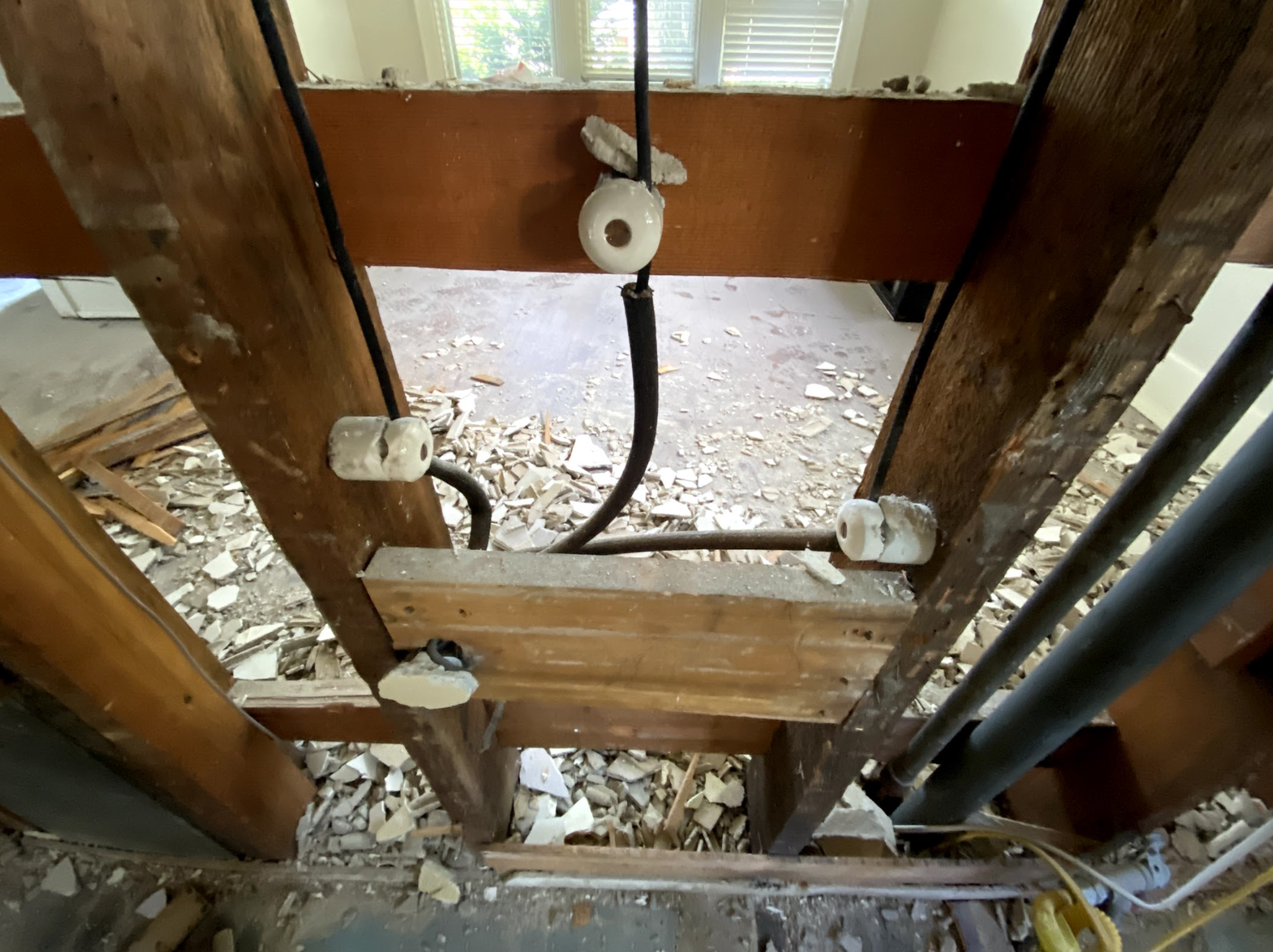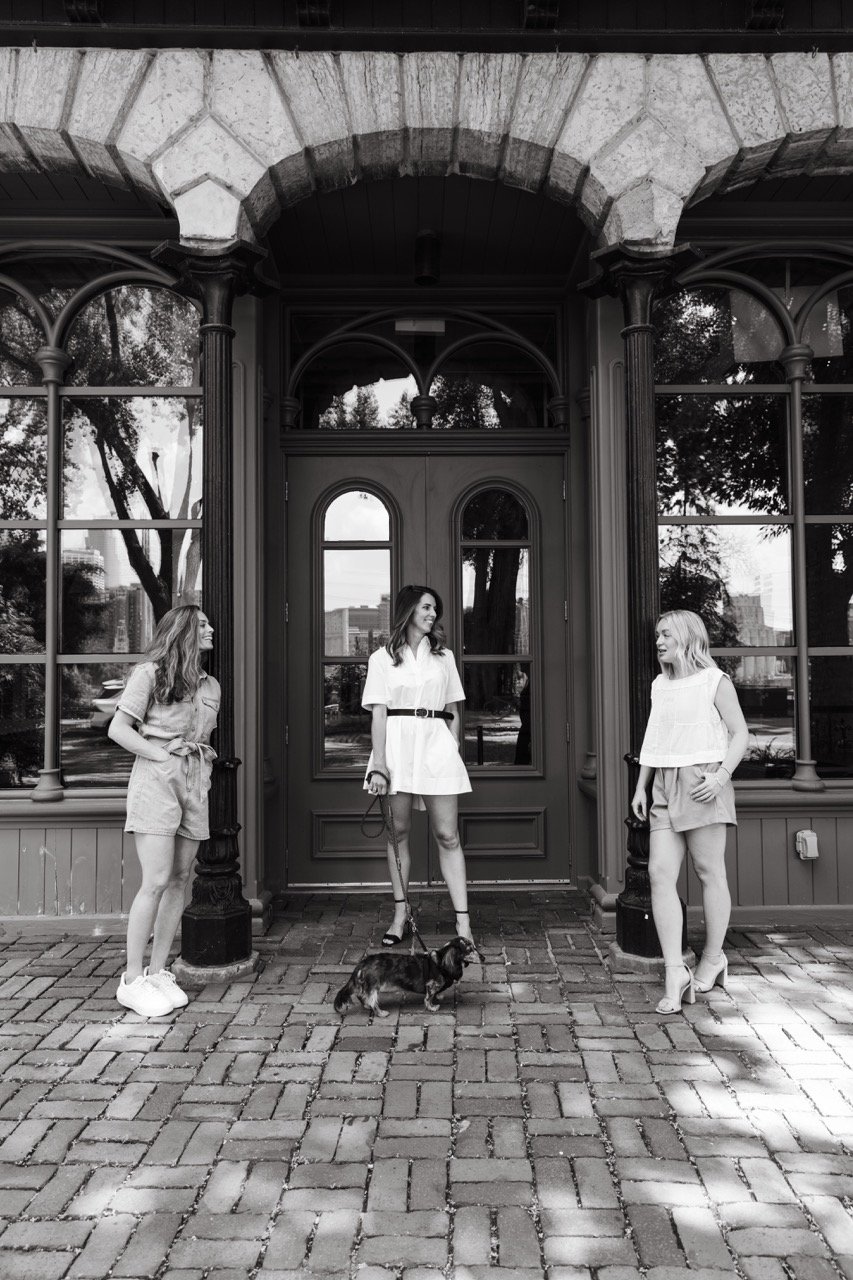5 Facts To Know About Knob and Tube Wiring in Older Homes
When demoing a room in any house, there is always a chance something unexpected will turn up. So when I started taking apart my kitchen and exposing what was behind the walls, I was aware I could be in for a surprise of my own.
Have you ever heard of knob & tube wiring? It’s the original electrical wiring used back in the early 1900s when homes were being built. It is fairly common to find around the Twin Cities in cities such as St. Paul and Minneapolis, and is considered a fire hazard by most insurance companies.
When I demoed my kitchen, I was not surprised to find it knowing that it was built in 1922. I knew it would have been present at some point in time and seeing how I was only the 3rd owner of this home, a lot had been left untouched.
What had thrown me for a loop though when I was initially walking the home to purchase it, was that there was a new electrical panel in the basement that had circuit breakers. Originally, this made me assume that the kitchen and updated basement were up to code in regards to electrical. Unfortunately, whoever did the electrical work, did not bring it fully up to code and instead tied in the new basement wiring with the old knob & tube electrical.
Electrical Inspections
Now, you might be asking me, why is it an issue? It’s been around for 100 years and hasn’t burned anything down yet, so what’s all the fuss? Well, with a complete kitchen renovation, I was opening up walls and had to have a city inspector sign off on the new electrical work that was installed. Unfortunately, the city inspector would then see that old wiring existed and would also see that it was installed incorrectly. Therefore, my entire home had to be “channeled” to replace the old electrical wiring with new. Insert cuss word here!
5 Things to Know About Knob and Tube Wiring
1.
Knob and tube wiring consists of hot and neutral wires separated from each other. K&T doesn’t have a grounding system in place like today’s electrical (hot, neutral, and ground).
2.
There is nothing inherently unsafe about knob and tube wiring. However, if damaged, it can become an issue. Example: It was insulated with rubber that breaks down when exposed to excessive heat. Places like attics are prone for exposed wiring that can be harmful.
3.
Knob and tube is only rated for 60° Celsius and modern light fixtures are built to have wires rated for 90° Celsius. If a junction box is not installed between the fixture and old wiring, overheating of the wires can take place.
4.
This old wiring is designed to be installed in free air to dissipate heat. Therefore, you wouldn’t want to add spray foam insulation into your walls or in your attic if the presence of knob and tube is unknown.
5.
Not all insurance companies will insure knob and tube wiring. Those that will, typically charge a small premium for the “increased fire hazard risk”.
Knob and Tube Wiring Replacement Cost
With all of that being said, I want to take a minute to let you know this post is not to raise concern if you live in an old home and don’t know what type of wiring you have. Instead, it is my goal to educate you on the differences so that you can be sure to check what additional steps, if any, you need to take when making updates to your home, such as light fixtures or insulation.
If it were up to me, I wouldn’t have updated the electrical wiring throughout my entire house. Knowing that there had not been any issues prior to my ownership, I would have personally been happy to have kept it in place if given the chance. The city inspector had other plans for my $16,000, though.
What Insurance Companies Cover Knob & Tube
A few years ago, there were a handful of insurance companies that would offer coverage on homes that had knob & tube electrical wiring. It was typically offered at a slightly inflated insurance rate, but would allow you to find home insurance coverage without having to make electrical improvements to the home.
Unfortunately, over time this has begun to change. As I continue to chat with home insurance providers each year, I am seeing more and more either not insure knob & tube electrical at all, or offer home insurance initially with the assumption and buyer/homeowner understanding it will need to be factored into replacement costs after taking ownership of the home.
Based on my research, here are a few insurance providers that could offer additional details on their product offerings and may be a fit for a homeowner dealing with knob & tube. (Note: Product offerings vary by each provider and should be researched independently).
Allstate
Auto Owners
Encompass Insurance
State Farm
Farm Bureau
Foremost
Liberty Mutual
USAA
Do you have more questions on what knob and tube and what it can mean for you? Reach out! I’m happy to connect you with some of the local experts in our market.
Take care!
Jen


















The Landlord Starter Kit provides essential platforms, templates, and strategies to establish strong rental property operations. From comprehensive lease agreement details and move-in/move-out checklists to an order of operations and rental application forms, this kit equips new and experienced landlords with practical resources to manage their rental properties efficiently.